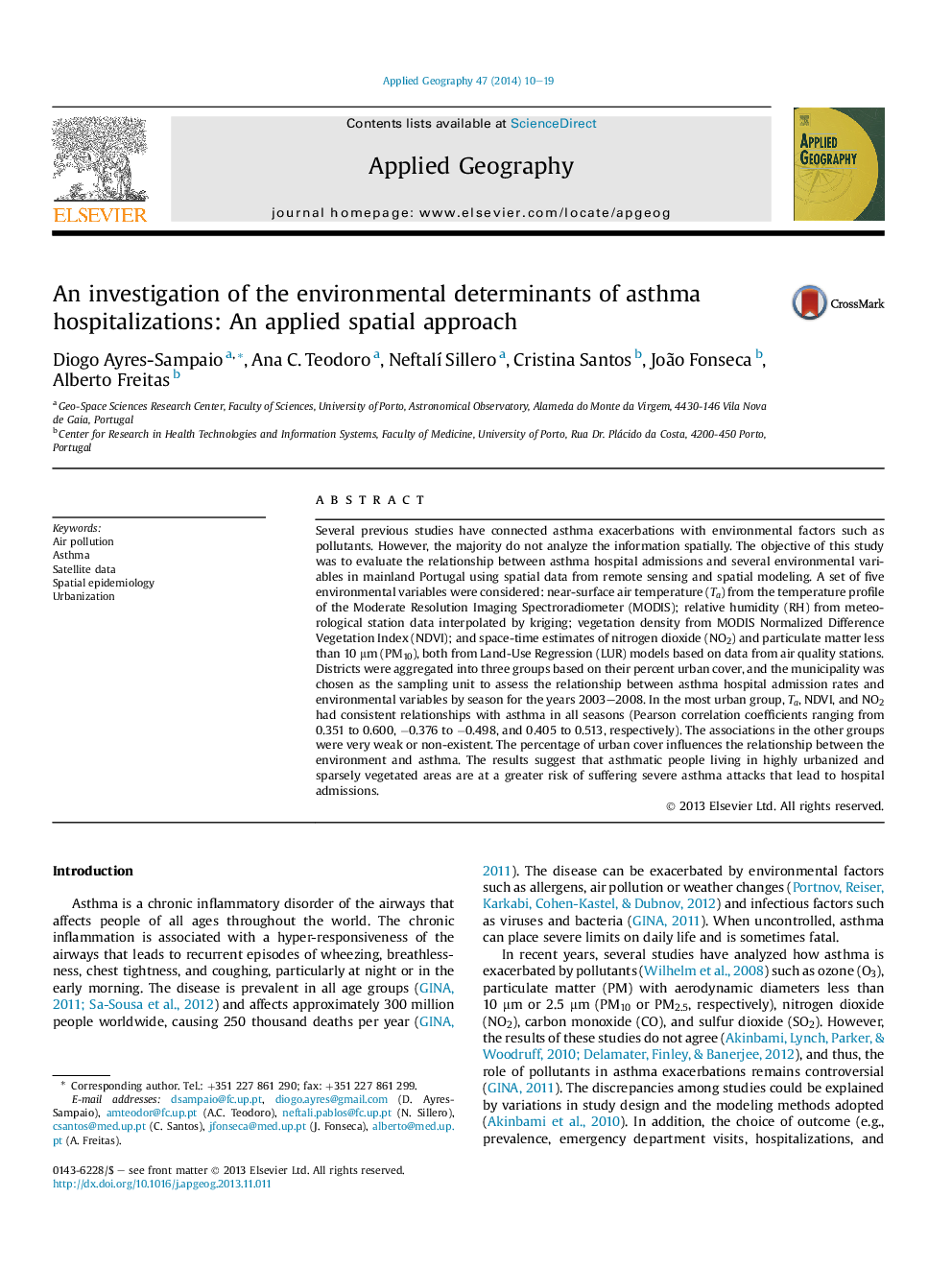| کد مقاله | کد نشریه | سال انتشار | مقاله انگلیسی | نسخه تمام متن |
|---|---|---|---|---|
| 83325 | 158717 | 2014 | 10 صفحه PDF | دانلود رایگان |
• We perform a nationwide spatial study to assess asthma–environment relationship.
• High NO2, low NDVI, and high temperatures increase asthma hospitalizations.
• The urban coverage influences the relationship between asthma and environment.
• Urbanization poses a higher risk of complications for asthmatic people.
Several previous studies have connected asthma exacerbations with environmental factors such as pollutants. However, the majority do not analyze the information spatially. The objective of this study was to evaluate the relationship between asthma hospital admissions and several environmental variables in mainland Portugal using spatial data from remote sensing and spatial modeling. A set of five environmental variables were considered: near-surface air temperature (Ta) from the temperature profile of the Moderate Resolution Imaging Spectroradiometer (MODIS); relative humidity (RH) from meteorological station data interpolated by kriging; vegetation density from MODIS Normalized Difference Vegetation Index (NDVI); and space-time estimates of nitrogen dioxide (NO2) and particulate matter less than 10 μm (PM10), both from Land-Use Regression (LUR) models based on data from air quality stations. Districts were aggregated into three groups based on their percent urban cover, and the municipality was chosen as the sampling unit to assess the relationship between asthma hospital admission rates and environmental variables by season for the years 2003–2008. In the most urban group, Ta, NDVI, and NO2 had consistent relationships with asthma in all seasons (Pearson correlation coefficients ranging from 0.351 to 0.600, −0.376 to −0.498, and 0.405 to 0.513, respectively). The associations in the other groups were very weak or non-existent. The percentage of urban cover influences the relationship between the environment and asthma. The results suggest that asthmatic people living in highly urbanized and sparsely vegetated areas are at a greater risk of suffering severe asthma attacks that lead to hospital admissions.
Journal: Applied Geography - Volume 47, February 2014, Pages 10–19
